More than 35 years ago, President George H.W. Bush announced the next step in the American dream for space exploration — not only returning to where we’ve been but reaching new limits in the realm of outer space.
“And next, for the new century, back to the moon, back to the future, and this time back to stay. And then, a journey into tomorrow, a journey to another planet, a manned mission to Mars,” he said during a 1989 speech commemorating the 20th anniversary of the Apollo 11 moon landing.
Today, Texas A&M University is ready to achieve those goals with the creation of the Texas A&M Space Institute. The institute will provide researchers with the resources they need to send humans to explore beyond the lower Earth orbit, back to the moon and finally, on to Mars. Not only will this institute push humanity forward in the exploration of the universe, but it will establish Texas A&M’s place as the top space university in the world.

The Texas A&M Space Institute will establish Texas A&M’s place as the top space university in the world.
Out-of-this-World Collaboration Space
The Texas A&M Space Institute will be a first-of-its-kind research facility rooted in collaboration, discovery and training. When it opens its doors in fall 2026, government entities and the private sector will be able to perform space-related research side by side, united by the shared motivation of space exploration.
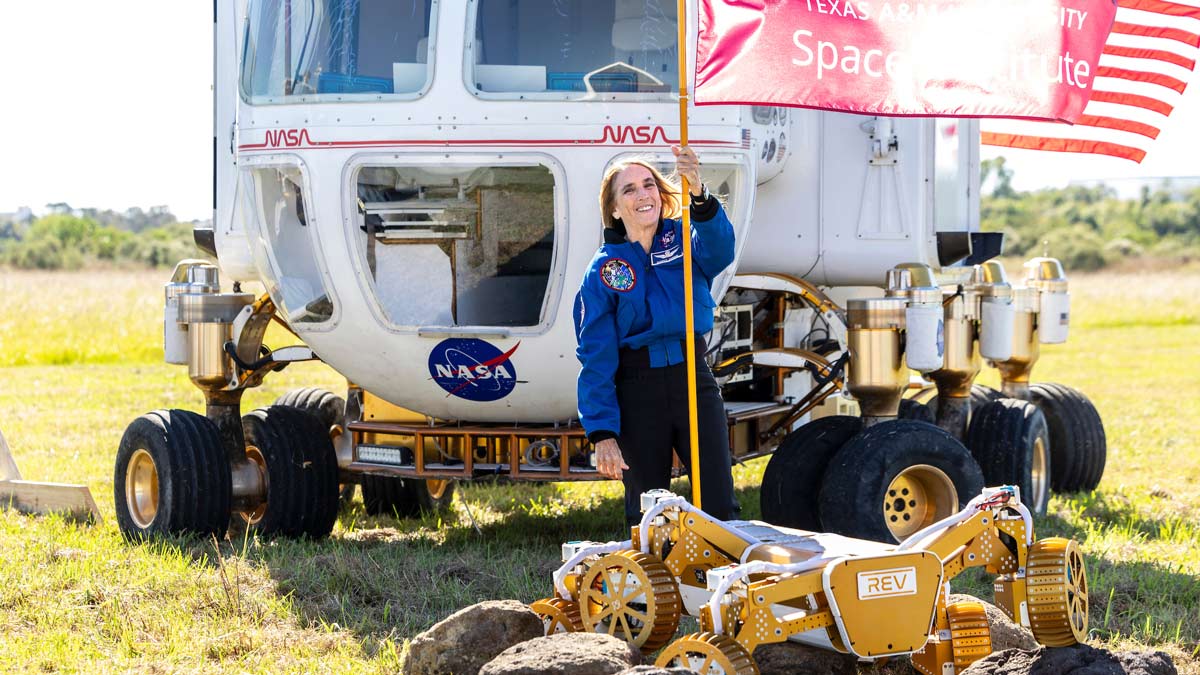
Dr. Nancy Currie-Gregg, director of the Texas A&M Space Institute.
Leading the institute is Director Dr. Nancy Currie-Gregg, a former astronaut who now teaches at Texas A&M’s College of Engineering. She will be working alongside Dr. Robert Ambrose, College of Engineering professor, who is serving as associate director.
With 400,000 square feet containing a moonscape and Marscape, research garages, conference rooms and presentation rooms all under one roof, the Space Institute will be a massive hub for space research. It will be the first building in NASA’s new Exploration Park, a 240-acre commercial property located next door to the Johnson Space Center in Houston. The Space Institute’s proximity to NASA will be critical in developing a stronger relationship between Texas A&M and the space giant.
The park will allow various organizations to work in close proximity to the astronauts and cargo that they are helping send to space. An entire community of entities with similar space-related goals will be established, and the Texas A&M Space Institute will be the first facility to begin working there.
One of the most exciting features of the new facility will be a two-and-a-half acre area replicating the moon’s surface, and another area the same size replicating the surface of Mars. Scape environments of this magnitude have never been created before. To put it in perspective, each scape will be the size of Texas A&M’s iconic Kyle Field. They will have enough room to train astronauts, test rovers and develop medical equipment — potentially even a space-based hospital.
Work on these varied research projects will take place in 2,000-square-foot “garages” in the middle of the facility — with half opening to the lunarscape, and the other to the Marscape. Currie-Gregg envisions these spaces as a hub for collaboration among all kinds of researchers.
“In a multitude of garages will be private industry of all sizes,” she said, “some developing space suits or rovers, critical to future human space exploration missions… In the next garage, perhaps the U.S. Space Force will be working on some of their military projects. The facility will provide a very collaborative environment, with everyone leveraging the extremely unique scapes for testing of full-scale equipment and providing an indoor environment for integrated research, testing and operations.”
With all the experts involved in a myriad of collaborative projects and the many resources available to them at the Space Institute, advancements in space flight will likely be made at a pace never seen before. Traveling to Mars is closer to reality than it’s ever been.
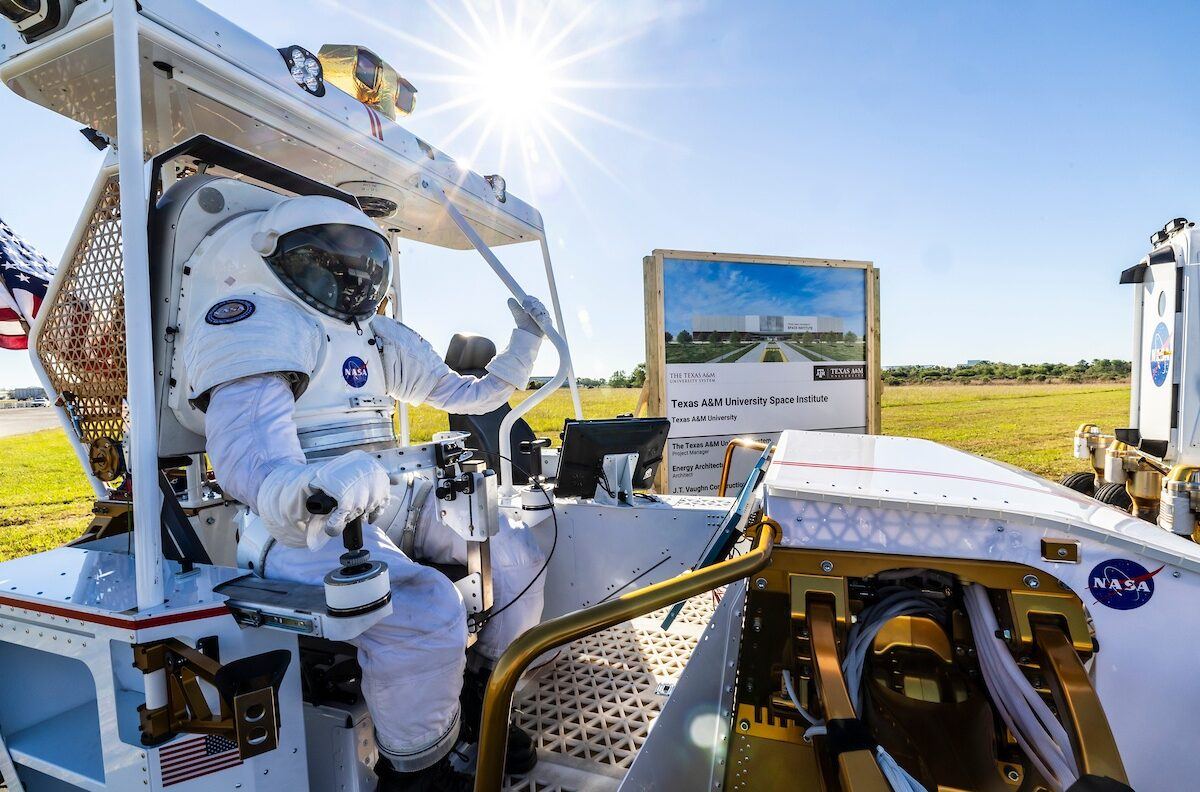

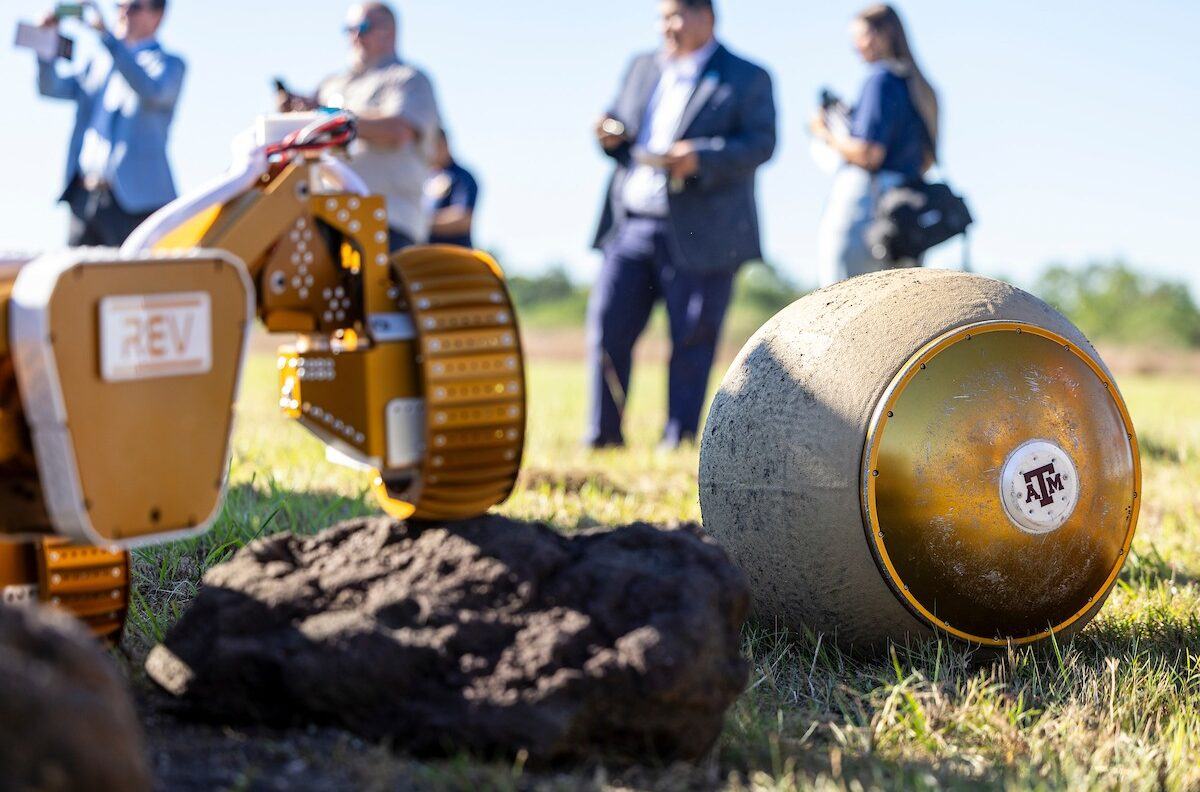
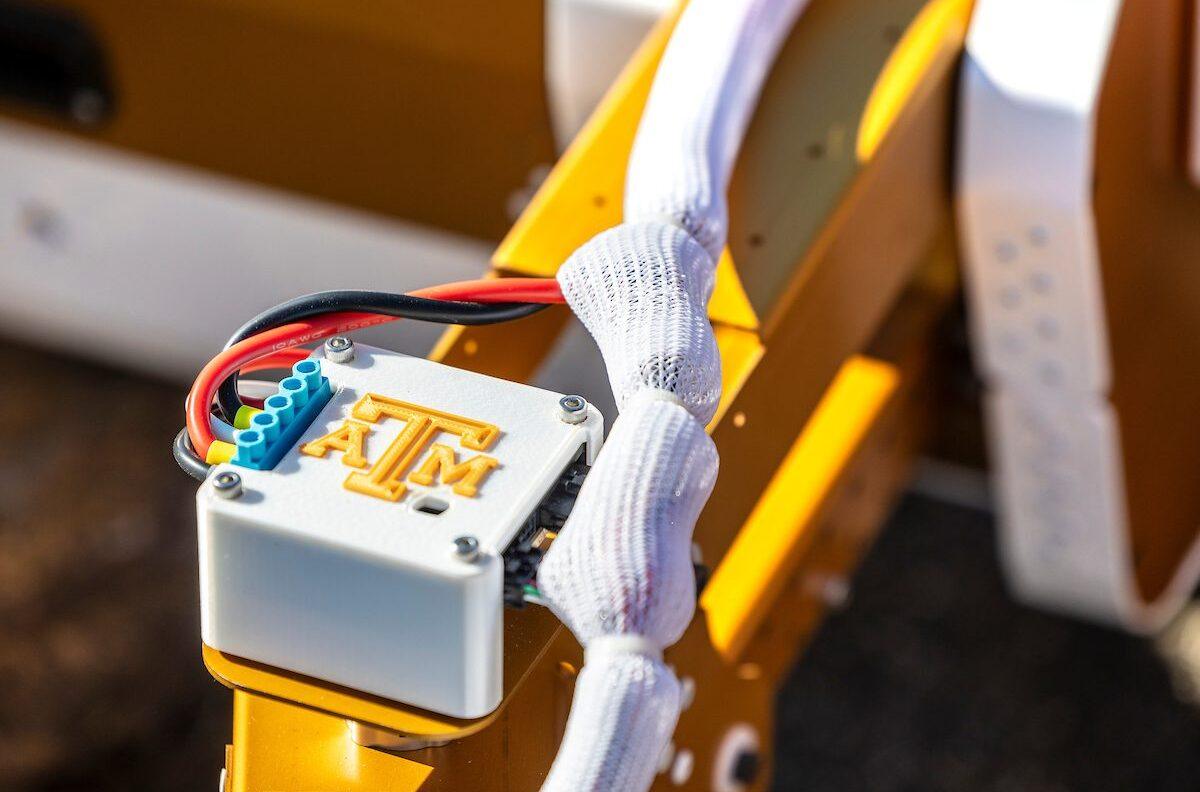
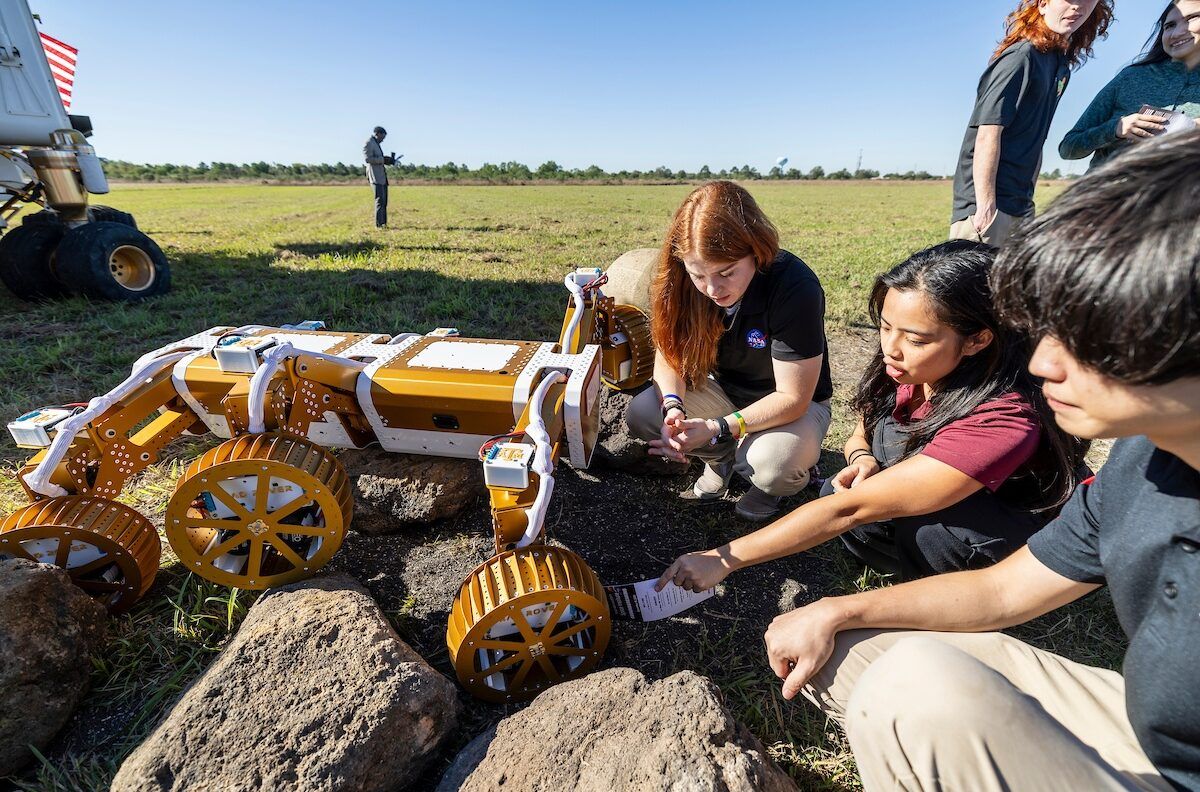
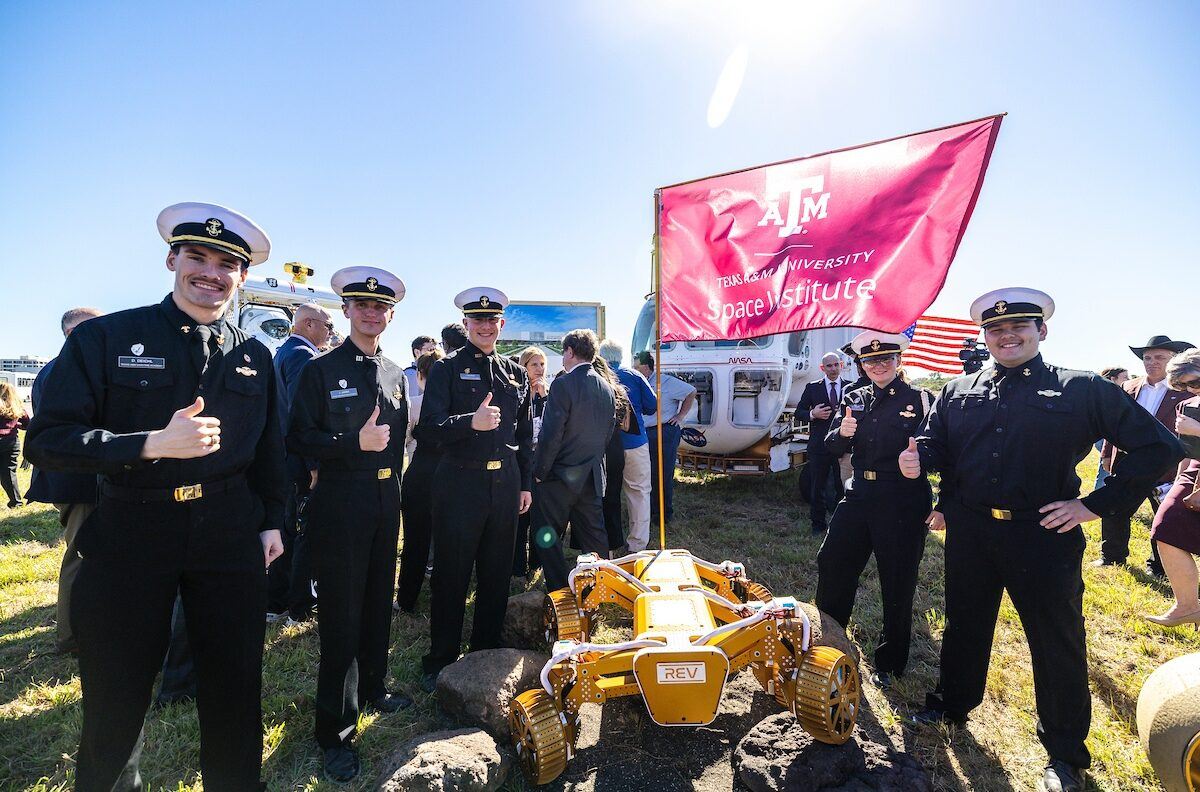
Photos by Abbey Santoro/Texas A&M University Division of Marketing and Communications
Big Goals Require Big Ideas
In order to successfully return to the moon, and then venture on to Mars, researchers will need to find solutions to the challenges presented by exiting Low Earth orbit, the space within 1,200 miles from Earth’s surface. Issues that we face here on Earth, like developing communication and power or finding reliable sources of water, will be escalated on the moon. The Space Institute will provide a fully enclosed, 24/7 facility where researchers can start to solve these problems and prepare for those complicated missions more efficiently than anywhere else.
Texas A&M has a long history of space research, with over 280 faculty and investigators — including five astronauts — currently involved in space-related projects, and 12 schools and colleges taking part in space research. Every field and discipline has the potential to help open doors to reach further into outer space. That’s why the Space Institute is being designed with collaboration as a priority.
With potential projects spanning from rovers to interplanetary communications, the only way to make progress will be for companies from around Texas to put their heads together in one space and share their discoveries.
“I love the fact that this is going to be a place where we can have community,” said Currie-Gregg. “And so the community that we’ll be building at this particular facility will be a community that’s going to also be on the surface of the moon.”
This new community was born from the establishment of the Texas Space Commission, which aims to expand Texas’ reputation as a leader in space exploration. Currie-Gregg serves on the Space Commission’s Board of Directors, and Ambrose serves on the Texas Aerospace Research and Space Economy Consortium Executive Committee (TARSEC). Ambrose was appointed to represent the chancellor of The Texas A&M University System on the committee.
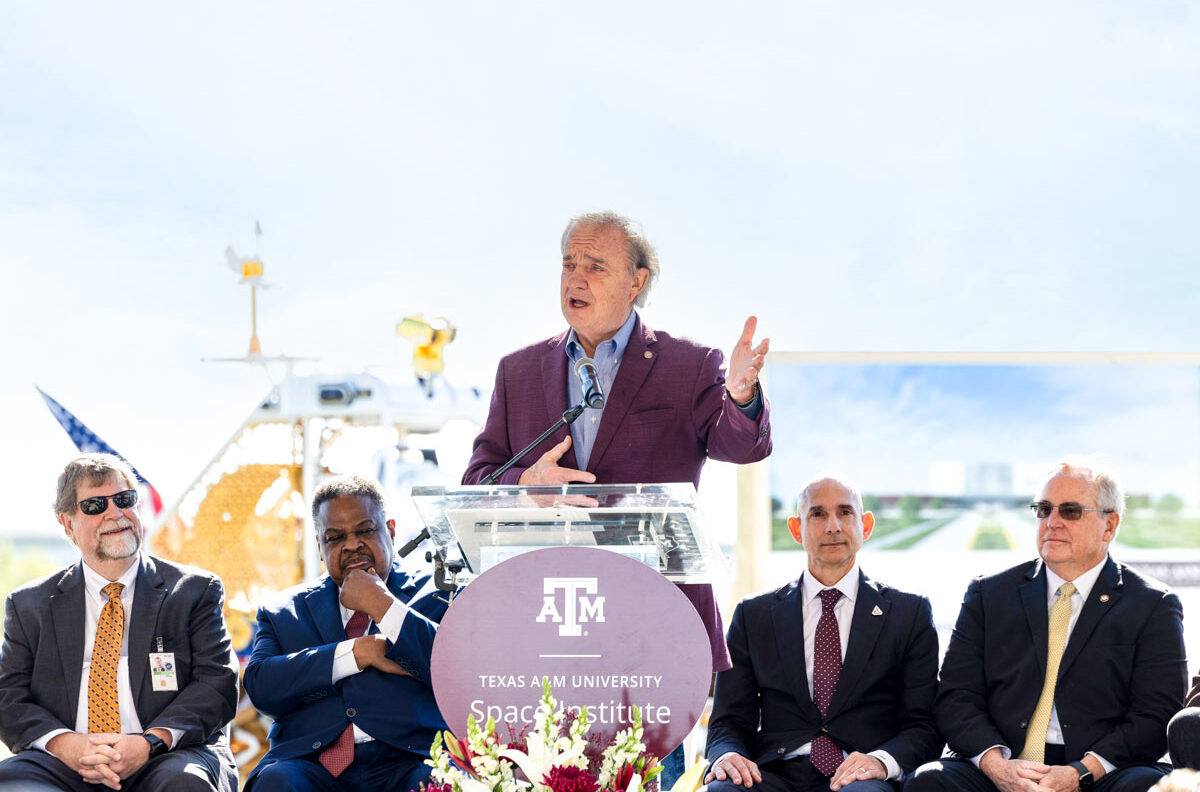
Texas A&M University System Chancellor John Sharp gives remarks at the groundbreaking for the Texas A&M Space Institute on Friday, Nov. 15, 2024. Seated behind him are (from left) Dr. Robert Ambrose, Texas A&M System Regent Bill Mahomes, Texas Rep. Greg Bonnen and Texas A&M President General (Ret.) Mark A. Welsh III.
The Space Commission was formed in 2023, when the Texas Legislature passed House Bill 3447, which allotted $350 million for space programs in Texas, including $200 million toward the Texas A&M Space Institute. Executive committee members for the Space Commission and TARSEC were named the following year.
With plans for the Space Institute to open in fall 2026, the state of Texas is quickly approaching a new era in space research and exploration. Momentum has been building among the various companies, organizations and universities around Texas, and once they are all under the same roof, there is no doubt that the discoveries and progress will be like nothing we’ve seen before. Texas A&M is ready for the next giant leap for mankind.
